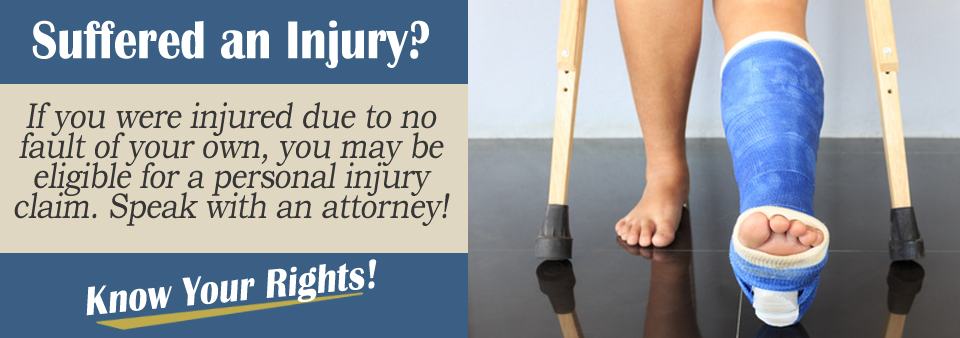When you are operating a vehicle, you have the responsibility to act in a safe manner and exercise due care to protect yourself and others from harm. You are to obey the rules of the road to avoid an accident.
When at all possible, you should act in a quick manner to avoid a crash. This means swerving to miss other vehicles or stopping with a moment’s notice, so you don’t collide with another car.
Staying alert is essential in avoiding car crashes. When you are at an intersection, you should use extreme caution before you pull out and continue your way.
Pulling Out From An Intersection
You are to make sure it is clear and safe to pull out before pulling from a side street, stop sign, or traffic control device.
Even if the approaching car is signaling, you should make sure they are turning before you pull out into traffic. You will also need to judge the speed of oncoming traffic. After all, your safety is in your hands and you need to exercise due care to avoid a collision.
When you pull out in front of another vehicle, even if it is speeding, you are acting negligently and have a major role in the crash. However, that does not mean you hold all the responsibility for the crash that results.
If Someone is Speeding Are They at Fault?
Reckless driving, such as speeding, failing to signal, and passing another vehicle in a no-passing zone, represents one of the most common causes of car accidents.
Speeding is ranked as the most common type of reckless driving, and it can happen on a rural two-lane road and a busy eight-lane superhighway.
When a driver exceeds the speed limit, the driver breaches the duty of care doctrine. The duty of care doctrine states drivers of automobiles assume the legal obligation of ensuring the safety of other drivers and passengers. However, some cases involving a speeding driver split the fault for causing a car accident.
To prevent assuming partial fault for a car accident caused by a speeding driver, your personal injury attorney must prove the speeding motorist caused the vehicle collision.
Liability For Pulling Out In Front Of Speeding Car
If you pulled out in front of a speeding car, the blame could fall on you and the other driver equally. If it can be determined that the crash wouldn’t have happened if the other driver had not been speeding, that will be taken into consideration.
After all, for a successful personal injury claim you will need to prove negligence. The accident report, photos of the crash scene, photos of damages, and eyewitnesses accounts of what they saw can help you with your personal injury claim.
You should gather up all the evidence and documentation that you can to support your claim. Your attorney can conduct his or her own investigation into the accident as well, which will be helpful in arguing your case and showing that the other driver was negligent by speeding. You can then use the information in a car accident demand letter.
Violating traffic laws, in this case speeding, is a breach of duty, which is a strong foundation is proving negligence when pursuing a personal injury claim.

How to Prove Speeding in a Car Accident
If you sustained one or more injuries caused by a speeding driver, your personal injury lawyer must prove the other motorist breached the duty of care doctrine.
The easiest way to prove negligence for speeding is to obtain a copy of the traffic citation issued for speeding.
However, many car accident cases involving a speeding driver do not produce traffic citations. Your personal injury attorney must gather and organize physical evidence.
Video Footage
Getting your hands on a copy of traffic camera footage can provide you with the most persuasive type of physical evidence that proves the other driver exceeded the speed limit right before hitting your motor vehicle.
Municipalities usually install traffic cameras at intersections, which means your accident might not be found on any of the traffic cameras installed. Security camera footage from private sources might capture the other driver speeding before impact.
Photographs
Photographs taken at the accident scene can indicate the direction and the impression of tire tracks.
Drivers who speed right before a car accident have to apply significant pressure on the brakes in an attempt to prevent a vehicle from hitting another car.
The result is a certain pattern of tire tracks that an experienced insurance adjuster can discover. Photos of road debris can indicate the speed of a motor vehicle at the time of impact.
Other photographic evidence taken at the accident scene includes photos of the damage done to your car, as well as photos that demonstrate the severity of your injuries.
Witness Statements
Witness statements do not represent physical evidence. Instead, witness statements support the physical evidence gathered and organized at the scene of a car accident.
They also can verify that the other driver exceeded the speed limit. Your attorney should interview witnesses as soon as possible after a car accident that involved a speeding motorist.
Witness accounts tend to be much more reliable the closer they are made to the date of a vehicle collision.
Official Police Report
Because of the severity of a car accident that involved a speeding driver, officers from the nearest law enforcement department should arrive at the scene of the accident for crowd control and to complete an investigation.
As the result of an investigation, the official police report includes witness statements, descriptions of physical evidence, and a section that assigns preliminary blame for causing the car accident.
Your personal injury lawyer reads the official police report before determining how to proceed with your case.
How Do You Determine the Speed Of a Car In an Accident?
The speed of two vehicles just before the crash is an important factor in determining who was at fault in a personal injury claim. Typically, defendants underestimate the speed they were driving at and also underestimate just how long it took them to react when they sensed that they could hit another vehicle.
One of the most obvious reasons for determining how fast another vehicle was traveling at is that if it was speeding, i.e. being driven at more than the local speed limit, this means that they were driving negligently and this could be a vital piece of evidence when determining fault.
Typically, speeds in cars and other vehicles are given in miles per hour, but this isn’t often the most useful measurement to use when determining speed just before a crash. It is actually more useful to know how far a vehicle could travel in a second, as crashes often happen seconds after drivers realize that they are in danger of colliding.
It is useful when preparing for a court case, or submitting evidence to an insurer, to convert miles per hour into feet per second. This is easy math as follows:
Multiply the miles per hour driven by 5280 (converting miles into feet) then divide by 3,600 (the number of seconds in an hour). To take an example:
30 mph = 30 x 5280 / 3600 = 44 feet per second.
Skid marks and eye witness statements together with calculations like these can help support your personal injury claim after a car accident.
Consult With A Personal Injury Attorney
If you have been involved in an accident where you pulled out in front of a speeding car and they hit you, you should consult with a personal injury attorney right away.
With the help of an accident injury lawyer, you can pursue a claim against the other driver and recoup compensation for your damages. Personal injury claims are challenging, so consult with an attorney today.
A strict statute of limitations applies, so make sure your claim is on track and you get access to the funds that you deserve after a devastating car crash.
